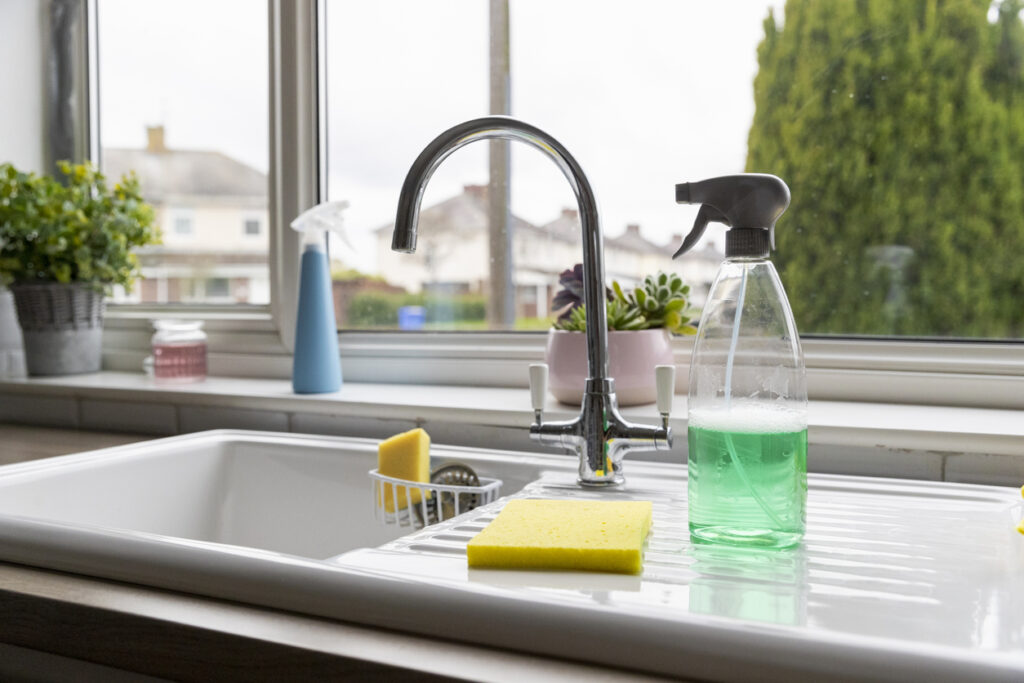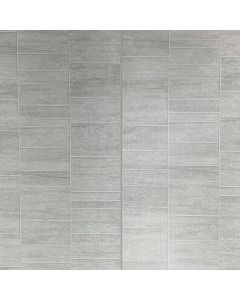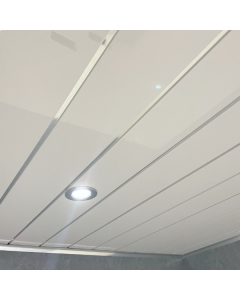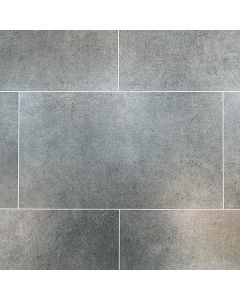How To Thoroughly Clean Your Kitchen
The kitchen is one of the most important rooms in a house. It’s where we cook our food, where we eat, and for many of us, where we wash our clothes. That’s why it’s crucial to keep the kitchen clean. If the kitchen is dirty, it can become dangerous to all who use it.
Because of this, it’s important to clean the kitchen regularly and thoroughly. You should clean the counters, the stove, the oven, and the floors. You should also clean the cabinets and the drawers. And, you should make sure to wipe down all of your appliances.
If you clean your kitchen regularly, it will be much easier to use – and much safer, too.
How often should you clean a kitchen?
There is no definitive answer to how often you should clean your kitchen. Some factors that will affect how often you need to clean include the size of your kitchen, the number of people who use it, and how often you cook. If you have a small kitchen, you may need to clean it more often than someone who has a bigger one. If you cook every day, you will likely need to clean your kitchen more often than if you only cook once a week. Generally, it is a good idea to sweep or vacuum the floor and wipe down the counters at least once a week. You may also want to disinfect the counters and appliances more frequently.
Your kitchen cleaning essentials
A clean kitchen is key to preventing the spread of bacteria and helping to maintain a healthy environment. While some people may enjoy cleaning, for others it can be a dreaded task. However, there are many benefits of a clean kitchen, so it's important to do what we can to make the process easier. Not only does it look nicer, but it also helps keep your family safe from harmful bacteria. Here are the basics you need for a thorough kitchen cleaning:
- A good all-purpose cleaner is essential for tackling grease, grime, and dirt. This multi-tasker can be used on just about any surface in your kitchen, from countertops to cabinets.
- A disinfectant is also important for killing bacteria and preventing the spread of illness.
- Cleaning wipes come in handy for wiping up spilt food, sticky spills, and other messes around your kitchen.
- Glass cleaner can be used to clean windows, mirrors, and other surfaces that need a streak-free shine.
- A scouring powder is great for removing stubborn stains and build-up from pots and pans.
- A vacuum cleaner or broom is key for getting rid of all the crumbs and dirt that have collected on your floors and surfaces.
- A mop for wet messes or sticky spills is the best way to get them cleaned up quickly.
Best way to clean your kitchen surfaces
There are many different ways to clean your kitchen surfaces. Some people use vinegar and water, others use bleach and water. But what is the best way to do it? And how do you make sure that your surfaces are truly clean?
The best way to clean your kitchen surfaces is to use a combination of vinegar and water. This will kill any bacteria or viruses on the surface, and will also remove any dirt or grease. Make sure that you rinse the surface well after cleaning, as vinegar can be quite acidic and could cause damage to your worktops.
If you want to be certain that your kitchen surfaces are clean, you can also use bleach and water. This is a more powerful disinfectant than vinegar and will kill any germs or bacteria on the surface. However, it is important to remember that bleach is also very corrosive and not a natural compound, so make sure that you rinse the surface well afterwards to prevent damage or injury. Here's a breakdown of how to thoroughly clean every section of your kitchen:
Cleaning the counters
Countertops are often one of the most cluttered and dirty places in a home. They can be difficult to clean, but with the right tools and techniques, they can be sparkling in no time. First, remove all the items from the countertop. This will make it easier to clean and dry. Next, use a disinfectant cleaner to clean the entire surface. Be sure to get into all the cracks and crevices. Finally, dry the countertop with a cloth or paper towel.
Be careful when cleaning around any sealant between countertops and the wall behind. If you use an abrasive material you could potentially damage the silicone sealant. Damaged sealant can lead to issues with waterproofing, and could cause the growth of mould if unattended. So, be sure to reapply sealant if this occurs.
Cleaning kitchen appliances
When it comes to cleaning the kitchen, appliances are often overlooked. Oftentimes, they’re considered ‘too dirty’ to clean alongside other items, and are left until later. However, if not cleaned on a regular basis, appliances can become a breeding ground for bacteria and dirt. Here are some tips for cleaning different kitchen appliances:
Oven
To clean the oven, start by spraying it with oven cleaner. Let the cleaner sit for a few minutes, then use a scouring pad or sponge to scrub it off. Next, use a wet rag to wipe down the inside of the oven. Finally, rinse off the oven cleaner with water.
Stove
There is a right way and a wrong way to clean a stove. The wrong way is to use harsh chemicals that can damage the finish of the stove. The right way is to use a gentle cleaner and a soft cloth. First, remove any food or grease from the surface of the stove with a paper towel or cloth. Then, pour some of the cleaner onto another cloth and wipe down the surface of the stove. Be sure to get into each area before rinsing off the cleaner and drying it off with a cloth.
Microwave
To clean the microwave, spray the inside with a non-detergent household cleaner. Then, wipe it out with a rag. If the microwave is still dirty after cleaning, then try using a cleaner that is made for metal. There are other cleaners that work well as well, such as vinegar and baking soda, but it is important to avoid ammonia-based cleaners.
Fridge
To clean the refrigerator, start by taking everything out of it and wiping down the surfaces with a wet rag. Next, take a bottle of dish soap and some warm water. Wash all the shelves inside and out by rubbing them down with a wet rag first. Dry them off completely before putting them back in the refrigerator.
Kettle
The best way to clean a kettle is with vinegar and water. First, fill the kettle with water and add white vinegar until it is full. Bring the vinegar and water to a boil. Turn off the heat and let the solution steep for about 15 minutes. Drain the solution and rinse the kettle with fresh water.
Cleaning kitchen floor
The kitchen floor can be one of the dirtiest places in your home, especially if you have kids or pets. But it's also one of the easiest to clean. All you need is a bucket of hot water, a dish soap, and a mop. To start, fill the bucket with hot water and add a few drops of dish soap. Mop the floor with the soapy water, using circular motions, and then rinse with clean water. Be sure to get into all the nooks and crannies between tiles or boards. Drying the floor is optional but recommended, as it will help prevent streaks and keep your kitchen looking clean for longer. Use a towel or a squeegee to dry the floor quickly and efficiently.
Cleaning kitchen cabinets
When it comes to cleaning cabinets, this does not have to be a daunting task. First, remove all of the contents of the cabinets and set them aside. Wipe down the inside of the cabinet with a damp cloth. If there is any stubborn dirt or grease, use a mild dish detergent mixed with water. Next, vacuum or sweep out the cabinet and wipe down the outside with a damp cloth. Finally, put everything back in its place and you are done!
Cleaning kitchen sink
The kitchen sink is one of the most commonly used areas in the home, so it's important to keep it clean. Not only does a dirty sink look bad, but it can also be a breeding ground for bacteria. Begin by wiping down your kitchen splashback panels before beginning on the sink itself. To clean your sink, start by pouring hot water down the drain to loosen any food particles. Next, use a dishwashing detergent to scrub the sink basin and faucet. You may also want to use a scrub brush or scouring pad for particularly grungy or grimy areas. Finally, rinse with hot water and dry with a towel.
Cleaning kitchen wall panels
To clean your kitchen wall panels, all you really need is a soft cloth and warm soapy water. Simply cover the surface of your panel with soapy water, giving it time to soak into any marks or stains. Then, remove the soap with fresh water on a new cloth in circular motions, ensuring you remove all the soap. Dry thoroughly to prevent the growth of mould, and, you’re done!
Daily kitchen cleaning tips
When it comes to keeping a clean kitchen, one of the best things you can do is develop a routine and stick to it. By following some simple daily cleaning tips, you can keep your kitchen looking neat and tidy all the time. Here are a few tips to get you started:
- Start by wiping down the counters and appliances with a damp cloth.
- Next, sweep or vacuum the floor to remove any dirt or debris.
- Wipe down the cabinets and shelves with a damp cloth.
- Finally, empty the trash can and sweep or vacuum under the stove and refrigerator.

























